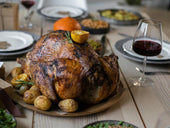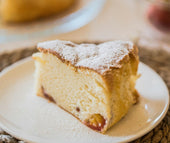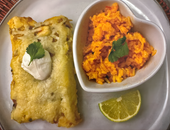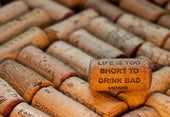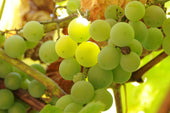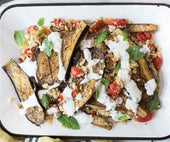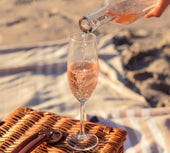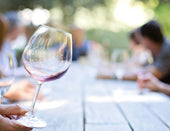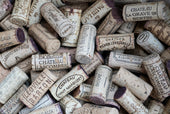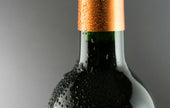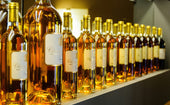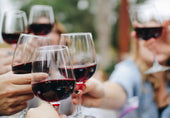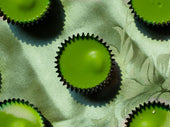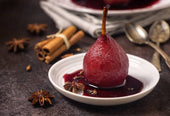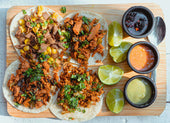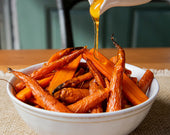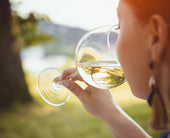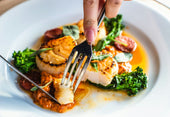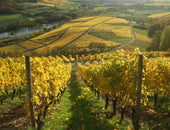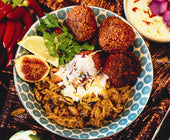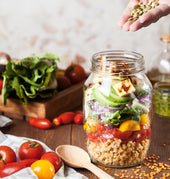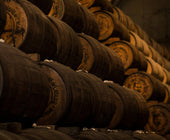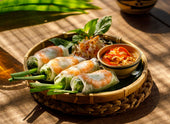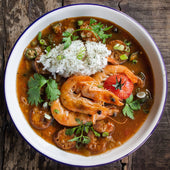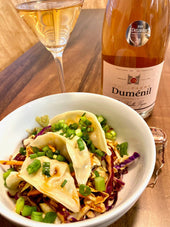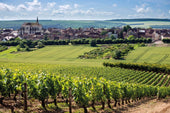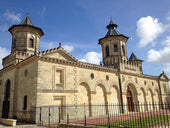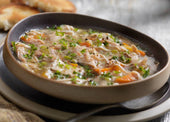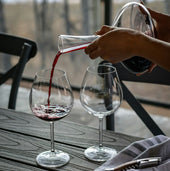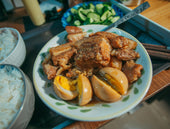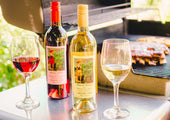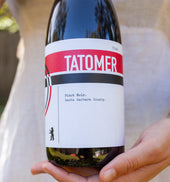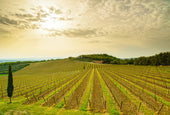
Meet the Six New Grape Varieties Approved in Bordeaux: Resilience at the Forefront of the Climate Change Adaptation Revolution

By : Iris Rowlee
On January, 26th 2021 the Institut National de l’Origine et de la Qualité, or INAO, the French Wines of Origin quality oversight board, officially gave approval for six new grape varieties to be planted in the wine region of Bordeaux and vinified for the Bordeaux and Bordeaux Supérieur AOC appellations. These two appellations form almost half of production for the region, with others expected to follow suit. The varieties are four reds: Arinarnoa, Castets, Marselan, and Touriga Nacional, and two whites: Alvarinho and Liliorila, were picked specifically for their ability to perform in the face of climate change. This posse is made up of three hybrids created in France in the mid-1900s, one who has been lying low, while the other two have garnered success abroad, one being called possibly the “signature grape” of China. Two more of the group originated south of the Pyrenees in neighboring Portugal and Spain where they have achieved boss status. The final one, just because you need an old talent for this tale who’s fallen into retirement but revived for the cause, all but forgotten, with a long history in Bordeaux. However, before we get more into these characters I want to delve into the scene they’ll be entering.
Bordeaux Today
As of now, Bordeaux is planted to approximately 66% Merlot, 22.5% Cabernet Sauvignon, 9.5% Cabernet Franc and 2% of other red grape varieties. The “other” consists of just under 1000 hectares of Malbec, 500 hectares of Petit Verdot, (although at the rapid rate this is being planted due to its later ripening ways, this number might already be outdated), and a wee 4 hectares of Carménère. For white grapes it’s about 47% Sémillon, 45% Sauvignon Blanc, 5% Muscadelle, and 3% other. In this case, “other” consists of a fun menagerie of grapes, Sauvignon Gris, Merlot Blanc, Mauzac, Colombard, Ugni Blanc, and Ondenc.
The Restrictions
The percentages of these grapes’ land holdings will shift slightly and some numbers will drop as the first plantings of these new characters are allowed to begin this year. (New varieties are grafted onto rootstock to get started and frequently this is onto pre-existing vines’ rootstocks in the vineyard.) These six grapes are not allowed to exceed more than 5% of an estate’s total vineyards and no wine bottling, red or white, is allowed to constitute more than 10% of the total blend. Furthermore, rights to plant these varieties, as of now, last 10 years, at which point they will be visited and their status assessed by INAO with a renewal option. At a 10% maximum allowed in any bottling, the new varieties will make their liquid debut anonymously, as current French wine laws do not require varieties under 15% to be listed on the label. This modest approach is intended to safeguard the region’s identity and the restrictions are to safeguard against quality issues. Yet, optimism for these grapes' success is strong, with many years of research behind it.
Plot 52, Survivor: The Grape Edition
In July of 2019 when this plan was originally announced, the Bordeaux Wine Council, or CIVB, a coalition of representatives of the Bordeaux’s grapes growers, winemakers, merchants, and traders said it was "the culmination of over a decade of research by wine scientists and growers of Bordeaux to address the impact of climate change through highly innovative, eco-friendly measures."
In 2009 Bordeaux's Science Institute of Vine and Wine, or ISVV, started an experimental vineyard called Plot 52 in Villenave-d'Ornon planted to 52 varieties, all chosen as candidates possessing traits to stand up to climate change. The lead engineer, and unsung hero, Agnès Destrac-Irvine, and her team of scientists spent enumerable hours leading up to these final 52 selections, observing and collecting data on potential candidates, which were mostly Mediterranean grapes with a late budding/ripening profile.

Agnès Destrac Irvine, the lead engineer of Agronomy and Environmental Sciences for Agroecosystems overseeing the experimental vineyard Plot 52 in Villenave-d'Ornon. © ISVV website.
Once the 52 were planted they were closely studied and in 2015, each variety was given its chance for fame, being vinified one micro-batch at a time, laid to rest for a few years, and revived for presentation and analysis by Destrac-Irvine, her team, and the local community of grape growers for overall performance. Seven varieties came out on top.
What happened to that seventh variety, the late-ripening and aromatic Petit Manseng? It was disqualified for conflicting associations. The INAO decided that although it met the criteria, it was too closely identified, or “emblematic of its Pyrenees-Atlantique origins” and stressed upholding the unique identity of France’s wine appellations.
Criteria Sought in Grapes
There are multiple possible criteria a grape could have to make it more suitable for climate change. Resistance to heat and drought, reduced susceptibility to disease, and later harvesting potential while still being able to maintain acidity, aroma and balance are among these criteria.
A Ripening Window and its Importance
Climate change is causing different growth cycles for grapevines. Average temperatures are rising, leading to shorter, more intense seasons and the extreme weather’s storms, bringing frosts, hail, strong wind, fire, you name it, at historically unusual times. This causes big disruptions in the vines’ life cycle and can prevent or destroy spring blossoms, stunt or knock down grape production and cause mold and malaise in wet harvest seasons. And this is just the proverbial tip of the iceberg.
It is important to understand that grapes must reach ripeness in two key ways to make good wine. One, appropriate sugar levels (brix) must be achieved in the grape as this translates to the wine's alcohol levels. If underripe and thus low in sugar the wine produced will be too low in alcohol and if overripe and high in sugar the wine will be too alcoholic to be pleasurable. Secondly, one must consider the grape’s phenolic ripeness/maturity, which contributes to much of the complexity, aroma, and flavor development of the wine. If the phenolic development is cut short, this can have the effect of blandness and/or unfortunate flavors, particularly green notes on some reds, and other angular aromas that are out of place. A problem with climate change is that often grapes will be at the sugar ripeness, and past it quickly, while still not having achieved phenolic maturity. Hot, flat wine anyone?
Every grape has its own development and ripening window; some bud earlier, some later, some like to take it slow and others are ready to go earlier in the harvest season. Grapes thrive best in certain climates that accommodate these traits. Cabernet Sauvignon hates to be rushed; Merlot gets to the airport three hours early for domestic flights. As the average temperature goes up, the plant’s yearly cycle of flowering, veraison (the point at which the grape starts ripening), and achieving ripeness will start to creep up earlier in the season. As the weather grows hotter and drier across Bordeaux, estimates say Cabernet Sauvignon will move out of its ideal ripening window by 2050. That is less than 30 years from now. If climate projections stay as they are, Merlot could be out of its ideal window in the Bordeaux region as early as 2035-2040.
The Numbers Behind the Merlot Intervention
Currently, approximately 66% of Bordeaux's red wine vineyards are planted with Merlot. Cabernet Sauvignon comes in second at approximately 22%, and Cabernet Franc is just under 10% of vineyard real estate. 90% of Bordeaux’s wine production is red. Furthermore, Bordeaux is the largest wine-producing region in France constituting 14% of the country’s total vineyard area. Fussy, difficult to grow well, with uneven early ripening, Merlot is not just the most planted variety in Bordeaux, but in all of France, at 13.6%. Oh my! In all of France, Cabernet Sauvignon comes in 7th place with 6.7%. Whereas the world over, Cabernet Sauvignon is the most planted variety, making up approximately 5% of the total world’s vineyards. Merlot, a trusty sidekick, comes in as the 2nd most planted red wine grape. The heat is also on with Sauvignon Blanc, an early ripener that does not do well with lots of heat. The pressure is slightly less immense though, as white wine only accounts for 10% of Bordeaux’s entire production.

Agnès Destrac-Irvine, the lead engineer of Agronomy and Environmental Sciences for Agroecosystems overseeing the experimental vineyard Plot 52 in Villenave-d'Ornon. © Radio France / Rosalie Lafarge
The Current Main Red Grapes in Bordeaux
Cabernet Franc has small, aromatically rich berries that reach optimal ripeness earlier in the harvest spectrum. It is the oldest of Bordeaux varieties and the father to some of the other major grapes of the appellation. It is thought to have originated in the Spanish Basque region and to have proliferated through France sometime after the end of the last ice age. It made its primary home in the Loire Valley (where it still reigns supreme in Chinon), before settling in Bordeaux.
Cabernet Sauvignon is a natural cross between Cabernet Franc and Sauvignon Blanc which probably appeared around the 1600s. In this case, lucky for the region, these two early ripeners, made a thick-skinned, structured, late ripener.
Merlot is an offspring of Cabernet Franc and Magdeleine Noire des Charentes. Merlot is a round, supple grape that doesn’t love heat, loves water, and whose deep blue-black sheen gave it its name as farmers perceived its resemblance to a blackbird, or “merle" in French. It’s also a chirpy bird in that early ripening sense. It was long known that Cabernet Franc was the father but it wasn’t until a vine DNA sample taken in 1996 led to the revelation of the full parentage of Merlot, the long sought after mother first sampled in an abandoned vineyard in the coastal area of Saint-Suliac, Brittany. Later it was discovered to be the same grapevine that the villagers grew as decorative vines in front of their houses in the area of Poitou-Charentes, north of Bordeaux. It was known as Raisin de La Madeleine, due to its being ready to harvest around the feast day for Saint Mary Magdalene on July 22nd. Once discovered, it was formally registered under the name Magdeleine Noire des Charentes.
Carménère is also thought to be an offspring of Cabernet Franc and Trousseau (Gros Cabernet) and although there is next to none of it left in Bordeaux, if it were to be added to the blend it would provide its rich color and ample tannins. Although it ripens a bit later and has crimson leaves when ripe, it was often confused with Merlot, hence its prominence in Chile (but that’s another story for another day).
Malbec has been called the stranger for much of its tenure in Bordeaux with the common nickname in the 1800s Etranger (foreign). It was clearly no child of Cabernet Franc. Its origins point to the area around the Lot River Valley near the town of Cahors, where it is known as Auxerrois or Côt. However modern research has shown that the stranger is not so much a stranger after all. Malbec and Merlot, it turns out, share a mother in Magdeleine Noire des Charentes. The other parent is thought to be Prunelard, an all but forgotten grape from southwest France.
Petit Verdot has probably been in the Bordeaux region since the middle ages but its later ripening ways indicate a much warmer homeland, although origin and parentage remain unknown. The one clue to its origin is that it made a natural crossing long ago, the grape Tressot, with Duras, a grape from the mountainous upper Tarn Valley. Perhaps however they might have both been brought there by Romans as they moved inland or from the Pyrennees. Its inky, deeply floral qualities are usually only added sparingly to blends.
The Current Main White Grapes in Bordeaux
Semillon makes up about 47% of white grape plantings in Bordeaux and is the primary grape in the sweet wine appellations of Sauternes and Barsac as well as in dry Bordeaux Blancs. It is thin-skinned, early ripening, prone to sunburn, has a high yield and its grapes are often low in acidity. It easily gets botrytis which is a plus for dessert winemaking. It is indigenous to Bordeaux with unknown parentage. France is where Semillon is most planted but it also has very significant acreage and popularity in Australia, where it first arrived in the 1800s.
Sauvignon Blanc comes in a close second at around 45% of plantings. This number continues to grow as Semillon and Muscadelle’s acreage continues to drop. Sauvignon Blanc is a very old variety, with unknown parentage, who like Cabernet Franc is an early ripener that makes its primary home in the Loire Valley where it’s famed for its appellations like Sancerre. In Bordeaux, it is a part of the sweet wine blends of Sauternes and Barsac and more dominantly in the dry Bordeaux Blanc blends. It is beloved and planted the world over and is one of those varieties that really wears its growing cycle on its sleeve. In cool climates and or when picked early it displayed grassy and green notes with crispy citrus fruit. In warm climates and or when picked later the wines take on much richer tropical notes.
Muscadelle makes up around 5% of the vineyards space, playing only a small role in Sauternes and Barsac production as well as in Bordeaux Blanc blends. Its forward grapey nose, floral notes, and name would maybe leave one to gather that it is a member of the Muscat family of grapes, but it is not. It is a cross between the white grape Gouais Blanc and a yet unidentified parent. In addition to the style of wine falling out of style, Muscadelle has lost ground because it is difficult in the vineyard, it is an early ripener with irregular yield, fragile skins, and a great propensity for rot. It does get more credit in the dessert wines of Monbazillac east of Bordeaux on the Dordogne River as well as in Australia where a much beloved, fortified dessert wine is made out of it called Topaque (formerly Tokay).
New Red Grapes Allowed in Bordeaux
Arinarnoa is a Tannat and Cabernet Sauvignon crossing bred by scientists in France 1956. The only hitch being, they thought the Tannat they had was Petite Verdot. Genetic testing has since shown otherwise. Tannat is from the Basque region in the Pyrenees Mountains and is a deep, dark, structured, mountain grape; rugged, complex, and tannic. The blend of these two powerful grapes definitely shows through in Arinarnoa and its deeply hued, firmly structured wines. It makes a great candidate for enduring climate change because it is rot-resistant and has low sugar levels and higher acidity. It is also known for its late budding and mid-ripening character, and medium vigor yet steady production of large bunches with medium-sized, thick-skinned berries.
While Arinarnoa’s worldwide plantings are small it has gained a following in some faraway places. Presently there are estimates of only 500 total acres planted with the majority of the world's Arinarnoa, about 34%, planted in Brazil. While much of Brazil’s land is not currently hospitable to wine grapes, its southernmost state, Rio Grande do Sul, is responsible for 90% of Brazilian wine production. Lebanon comes in second place at 28% where they may have beat Bordeaux to the punch with Chateau Ksara blending it with Cabernet Sauvignon in their Le Souverain bottling. Back to South America, Uruguay comes in third, where its parent grape Tannat reigns supreme. France comes in at 4th place at 13% where it’s grown mainly in the south of France the Vin de Pays designations of the Languedoc and Provence. There is even a bit in Arizona, notably at Page Springs Cellars, where it is planted specifically for its ability to do well in hot climates.
Castets is a variety that pre-phylloxera had its fair share of planting in the southwest part of France including in the Bordeaux area. A natural crossing between Gros Cabernet and Camaraou noir (which is planted in the Spanish wine region of Galicia where it is known as Espadeiro), it’s thought to have originated in the Pyrenees. By the early 1800s, it had become established in the area of Saint–Macaire further up the Garonne River from the Bordeaux area. In this area is a village called Castets–en–Dorthe which many speculate is where it got its name. Castets is still grown in Aveyron, one of its historic growing regions, and is authorized to be included in the rose and red wines of Vins D’Estaing, an appellation to the north of Rodez where it is blended with varieties like Fer and Gamay Noir.
Castets is resistant to vine disease; less susceptible to the likes of grey rot, and powdery mildew. Its small, blue black berries produce wines that are typically deeply hued with high tannin, medium acidity content that make it suitable for aging.
Marselan, named for the coastal town of Marseillan, is a crossing of Cabernet Sauvignon and Grenache that was bred by French ampelographer Paul Truel in 1961. It is late-ripening, putting it at a lower risk of spring frost, summer heat, and is not susceptible to grey rot, powdery mildew, and mite damage. Originally conceived to capitalize off of Grenache high-yielding, heat tolerant, very late ripening ways and Cabernet Sauvignon's concentration and finesse. The wines are richly hued, medium-bodied but concentrated, with high acid and fine tannins, capable of aging. The grape was benched when first presented because they couldn't get it to grow big or profuse enough berries. Trends have changed and with attention to quality over quantity, its lower yields have been viewed as desirable and things have been on the up and up for Marselen ever since.

Château Lafite’s Domaine de Long Dai in Penglai China - Photo by Richard Haughton
While grown in the Languedoc and in parts of California, it has really gained its main audience thus far with the wine regions of China where Bourdeaux’s influence was key in establishing the regions’ styles and facets. Halfway between Beijing and Shanghai, Shandong province has become China’s largest wine region claiming 40% of national production since the founding of its first modern commercial winery there, Changyu, in 1982. Shandong also has the claim to fame of being where Confucius’s birthplace is as well as the home to Tsingtao brewery. Much of the region’s prominent grape growing area is formed by a peninsula surrounded by the Bohai and Yellow Seas, and just north of the peninsula is where the prolific Yellow River meets the sea. On the north coast of the peninsula is what’s known as China’s wine capital, the city of Yantai. West of the city, some wineries like Changyu have massive estates modeled in the French style, in the likeness of the great Bordeaux châteaux.
The latest breathtaking addition to the area is Domaine de Long Dai, Château Lafite Rothschild’s Chinese based estate, opened in 2018 but a project they have been pouring much of their resources and attention into since first planting 75 acres of Cabernet Sauvignon, Marselan, and Cabernet Franc on granite-based soils in 2008.
In China, Cabernet Sauvignon is king, where it is the most planted grape by far, followed by Merlot, Cabernet Franc, and Carménère. There’s a funny little side story on Carménère. It was actually one of the very first European varieties to be planted in China starting in the 1800s. It showed up under the German name Cabernet Gernischt which means roughly, Mixed Cabernet. It wasn’t until recently that it was found to be genetically identical to Carménère. It is often blended with Cabernet here and can account for some green bell pepper aromas found in wines here, a common trait of Carménère. Especially with Cabernet Gernischt being IDed as Carménère, China’s desire for a signature grape has led to prospecting Marselen.
Marselan was planted in an experimental vineyard in 2001, had its first vintage in 2003, and by 2005 had proliferated to all the other wine regions. The humidity in the Yantai-Penglai area of Shandong is a perfect place for Marselen to show off its resilient talents. Today there are many quality examples of Marselan on the market with notable results being shown in the Xinjiang and Hebei regions particularly.
Touriga Nacional is a flagship variety of Portugal, called by many its best and adored for its wines, though its yields in the vineyard are some of the lowest of the species due to its super small, sparse grapes. It’s used primarily for production in Port wines and increasingly, dry reds as well. With its concentrated, low outputs, although important, it usually represents only a small percentage of the blends. Touriga Nacional is a very old grape with unknown parentage, though one of its offspring is one of its main cohorts in the vineyard, Touriga Franca. While it is found all over Portugal including the Azores, its home historically and where most of the world’s plantings are, is Portugal’s northern Dão and Douro regions. Both have claimed to be the original home of it. In the Douro, there is a town named Touriga yet DNA analysis has shown that there is a much greater rate of clonal/biotype diversity within the planting of Touriga Nacional in the Dao area than in the Douro showing a much longer living relationship with the Dão. Before phylloxera, Touriga Nacional was much more diffuse and was said to cover up to 90% of the Dao appellation. When replanting happened it was often with far more bountiful varieties.
These days there are hundreds of clones/biotypes of Touriga Nacional, many of which have been bred to have somewhat more generous yields without altering the character of the grape, focusing on increasing pollination and such, and that coupled with more aware farming methods have led to an optimistic little rise in yields. With low sugar levels, low yields, high acidity, tannins and complexity one could see why this is a candidate for adapting well to climate change. Couple that with the fact that it is late-ripening, performs well in high heat, low water environments, like the often steep, schist-laden, barren Douro vineyards, add in low susceptibility to most fungal disease and you can see why it was picked.
Touriga Nacional has been compared to Cabernet Sauvignon, both full bodied, dark hued, well structured wines capable of complexity as well as age-ability due to their high acidity and tannin profile. They both take well to oak and like Cabernet Sauvignon, is used to performing in a blend. Jancis Robinson has likened Touriga Nacional and Touriga Franca’s relationship to Cabernet Sauvignon, bringing the bulk of the structure and Cabernet Franc filling out the bouquet. A unique aspect of Touriga Nacional’s palate profile is its small and sparse grapes. The grapes are already thick-skinned and the tiny nature of the berries leads to a high grape skin to grape pulp ratio, and because these skins are rich in color, aromas, and tannins, they have a very heightened concentration to their wines.
New White Grapes Allowed in Bordeaux
Alvarinho (Albariño) is called the former in Portugal and the latter is Spain and both names are based on the Latin adjective for white, albus. It's been on the scene for a very long time (first references date back to the 12th century) and many surviving centenarian plus vines live to tell the tales. It is guessed to be related to southwestern France’s Petit Manseng in some way although parentage is unknown. About 72% of the world’s plantings are in Spain and about 21% are in Portugal. Both regions have deep historic ties to the grape and its origins seem to be based on both sides of the modern border.
The Rías Baixas DO wine appellation sits on the northwesternmost tip of Spain, starting just above the Minho River that separates Spain from Portugal. The name Rías Baixas is Galician for “Lower Rivers'' as there are four inlets of the Atlantic Ocean each fed by a river, shaping the appellation’s unique facets. The sub-appellations share a similar sandy, granitic soil that Albariño performs best in. The Rías Baixas DO was established in 1986 to highlight this special region, It was the first time in Spain that the variety was the prominent focus of the label and Albariño really began to take off as an internationally recognized and appreciated wine.
South of the Minho River, in northwestern Portugal in the famed Vinho Verde DOC wine appellation, Alvarinho also shines particularly in the single variety wines of the “grand cru” sub-appellations of Monção and Melgaço. It is a prominent player in the Vinho Verde wines as a blend as well. Vinho Verde meaning, green wine, is not about color but is a reference to young wine meant to be consumed fresh. They are often made in a lower alcohol (8.5% – 11.5% ABV.), light, bright, refreshing style often bottled with a little CO2 for a pleasing, lightly effervescent note many consumers have come to know and love. Just like in Spain, the Alvarinhos of this region were the first in the country to be labeled and marketed by grape variety name.
This region is typified by many, many small growers farming tiny plots and this area is a beautiful agriculture patchwork with a rich, unique culture. An interesting viticulture practice they had for centuries and still do in some places in Portugal (and Spain) is using trees, particularly Poplar, bushes, fences, and later even the occasional telephone pole as trellises for the Alvarinho vines to grow up. More commonly you will see pergolas which do the same trick to keep the vines, which don’t like to be wet, off the ground.
Although Alvarinho is sensitive to mildew and rot, preferring well-draining soils like the sandy, granitic soils found in Rías Baixas (and much of Bordeaux) it does fine in humidity and can tolerate quite a bit of heat. Alvarinho has vigorous vines, but low-yielding, small bunched, small berried grapes, with thick skins and big pips (the seeds of the grapes). These thick skins and prominent seeds give the wine a high phenolic content and often impart a distinct, likable to many, citrus pith bitterness note to the characteristic boldly aromatic, fresh, fruity, delicately floral wines. Although most Alvarinho is consumed young, it can have a great potential for aging due to its high acid and phenolic content. In addition to having high acid, another trait that makes it a particularly apt adapter to climate change are its naturally lower alcohol levels, so while heat makes the acid drop and alcohol rise, this grape will be coming from a better starting point.
Liliorila is a crossing of the grapes Baroque and Chardonnay created in France by scientist Pierre Marcel Durquety in 1956 at the University of Montpellier. Its bold, floral, highly aromatic nature can really compensate for heat-induced aroma loss. It is early maturing, low yielding, small bunched, and berried, and while not very susceptible to grey rot damage it is susceptible to botrytis making it a good candidate for noble rot sweet wines. Its wines are often lower in acid and can be higher in alcohol. There is very little of this grape planted anywhere. There are small amounts of planting in southwestern France in the departments Charente, Haute-Loire, and Lot and a smidge in Switzerland.
While Chardonnay is a very well-known grape, its other parent, Baroque, is quite obscure. Although it used to be grown throughout the region, what there is of it now is planted in southwestern France almost solely in the Tursan appellation in the Landes region where it is dominantly blended with Gros Manseng and Sauvignon Blanc. Baroque is thought to be a natural crossing for Folle Blanche and Sauvignon Blanc and displays some aromatic traits of the latter. It has been theorized as well that it could have come from Galicia, Spain although it has been present in France since at least the 1700s. It used to be favored for its ability to resist odium, rot, and mildew, which many other vines fell prey to. By the 1980s though it was on the verge of extinction as much of its vineyards had been uprooted to make way for land development. A 3-star Michelin-rated chef Michel Guerard and his wife have been credited with reviving it at their vineyards in Tursan. Full bodied with high acid, often carrying notes of pear and hazelnut, the variety is known to have a crisp refreshing palate even at higher alcohol levels, which is definitely a climate change friendly trait.
Experimentation Continues
The experiments continue at Plot 52 under Destrac-Irvine’s supervision. In a recent interview with Wine Spectator, she spoke of a new set of drought-resistant varieties from Cyprus that they have grafted onto vines there and are studying. The recently approved grapes aren’t the end-all, be-all additions to the appellation. There is a likelihood more will be considered, and some could be dropped. The focus on adaptable grapes is just one approach in a multi-faceted plan involving other enological and agricultural changes in the region. Cheers to the Bordeaux wine industry and Agnès Destrac-Irvine and her team for their hard work and pragmatic foresight which will perhaps help others to face the music. And when you can do things in your life that positively affect climate change, remember, save a Polar Bear, save a Pomerol!
Read Agnes and other scientists detailed findings here “Adapting Wine Grape Ripening to Global Change, a Multi-Trait Approach :
lobal Change, a Multi-Trait Approach :

This article was contributed by Iris Rowlee. She is a Court of Masters certified Sommelier, a Vinitaly International Academy Italian Wine Ambassador, and a 3iC Certified Educator.

